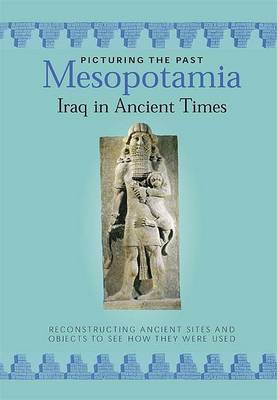Picturing The Past
2 total works
Shows in simple graphic terms how ancient buildings and objects were actually used, and provides examples of numerous everyday objects. First cultivated by the Sumerians, who were replaced by the Assyrians and the Babylonians, Mesopotamia is commonly known as the cradle of civilization, for it was there that the first cities and monumental temples were built, and there too that writing, schools, libraries, written law codes, mathematics and astronomy developed. Today this land is known as Iraq. Beginning with irrigation and the formation of cities, Mesopotamia: Iraq in Ancient Times covers such topics as farming, writing, craft, trade, domestic life, religion, warfare, burial, kingship and law. Using artifacts, such as a vase or a cuneiform tablet, geographical sites, and archaeological evidence, this book looks at the past in a new and exciting way. It does this by showing in simple graphic terms how ancient buildings and objects were actually used, and by providing examples of numerous everyday objects. Each two-page spread covers a different topic. Text, photographs, illustrations, archaeology information boxes and time-lines are used to great affect. Captions and diagramming also are used to relate the different elements of the presentation, and each spread contains a link to an authoritative website for further information. A chronology of political and social history, as well as a glossary and index are included. Informative and amply illustrated, Mesopotamia: Iraq in Ancient Times is sure to prove of great interest, particularly at this time, in the aftermath of war and the looting of the Iraqi National Museum, which housed many of the oldest artifacts of Western Civilization. The Picturing the Past Series: How do we know what we know about ancient peoples and their cultures that have disappeared? Ultimately, there are three main sources of information: the images that survive in wall paintings, ceramics and sculptures; artifacts, such as jewelry, utensils, toys, clothing, and tools; and the writings of ancient authors that have survived the ravages of time. From such sources, it is possible to begin to reconstruct the life of the distant past with an astonishing degree of accuracy. Recreates daily life in remarkable and well-founded detail.

